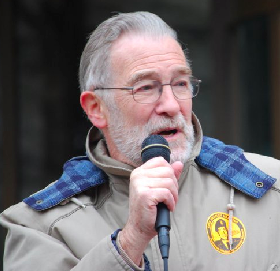This piece was reprinted by OpEd News with permission or license. It may not be reproduced in any form without permission or license from the source.
Buried in an inside page of the Times' Jan. 7, 2017 report was a cautionary paragraph by reporter Scott Shane. It seems he had read the ICA all the way through, and had taken due note of the derriere-protecting caveats included in the strangely cobbled-together report. Shane had to wade through nine pages of drivel about "Russia's Propaganda Efforts" to reach Annex B with its curious disclaimer:
"Assessments are based on collected information, which is often incomplete or fragmentary, as well as logic, argumentation, and precedents.... High confidence in a judgment does not imply that the assessment is a fact or a certainty; such judgments might be wrong."
Small wonder, then, that Shane noted: "What is missing from the public report is what many Americans most eagerly anticipated: hard evidence to back up the agencies' claims that the Russian government engineered the election attack. This a significant omission."
Since then, Shane has evidently realized what side his bread is buttered on and has joined the ranks of Russia-gate aficionados. Decades ago, he did some good reporting on such issues, so it was sad to see him decide to blend in with the likes of David Sanger and promote the NYT official Russia-gate narrative. An embarrassing feature, "The Plot to Subvert an Election: Unraveling the Russia Story So Far," that Shane wrote with NYT colleague Mark Mazzetti in September, is full of gaping holes, picked apart in twopieces by Consortium News.
Shades of WMD
Sanger is one of the intelligence community's favorite go-to journalists. He was second only to the disgraced Judith Miller in promoting the canard of weapons of mass destruction in Iraq before the U.S. invasion in March 2003. For example, in a July 29, 2002 article, "U.S. Exploring Baghdad Strike As Iraq Option," co-written by Sanger and Thom Shanker, the existence of WMD in Iraq was stated as flat fact no fewer than seven times.
The Sanger/Shanker article appeared just a week after then-CIA Director George Tenet confided to his British counterpart that President George W. Bush had decided "to remove Saddam, through military action, justified by the conjunction of terrorism and WMD. But the intelligence and facts were being fixed around the policy." At that critical juncture, Clapper was in charge of the analysis of satellite imagery and hid the fact that the number of confirmed WMD sites in Iraq was zero.
Despite that fact and that his "assessment" has never been proven, Clapper continues to receive praise.
During a "briefing" I attended at the Carnegie Endowment in Washington several weeks ago, Clapper displayed master circular reasoning, saying in effect, that the assessment had to be correct because that's what he and other intelligence directors told President Barack Obama and President-elect Donald Trump.
Note: OEN published Ray McGovern's dialogue with James Clapper on Sunday, January 6.
[.........]
Not Worth His Salt
Having supervised intelligence analysis, including chairing National Intelligence Estimates, for three-quarters of my 27-year career at CIA, my antennae are fine-tuned for canards. And so, at Carnegie, when Clapper focused on the rump analysis masquerading as an "Intelligence Community Assessment," the scent of the duck came back strongly.
Intelligence analysts worth their salt give very close scrutiny to sources, their possible agendas, and their records for truthfulness. Clapper flunks on his own record, including his performance before the Iraq war not to mention his giving sworn testimony to Congress that he had to admit was "clearly erroneous," when documents released by Edward Snowden proved him a perjurer. At Carnegie, the questioner who followed me brought that up and asked, "How on earth did you keep your job, Sir?"
(Note: You can view every article as one long page if you sign up as an Advocate Member, or higher).






